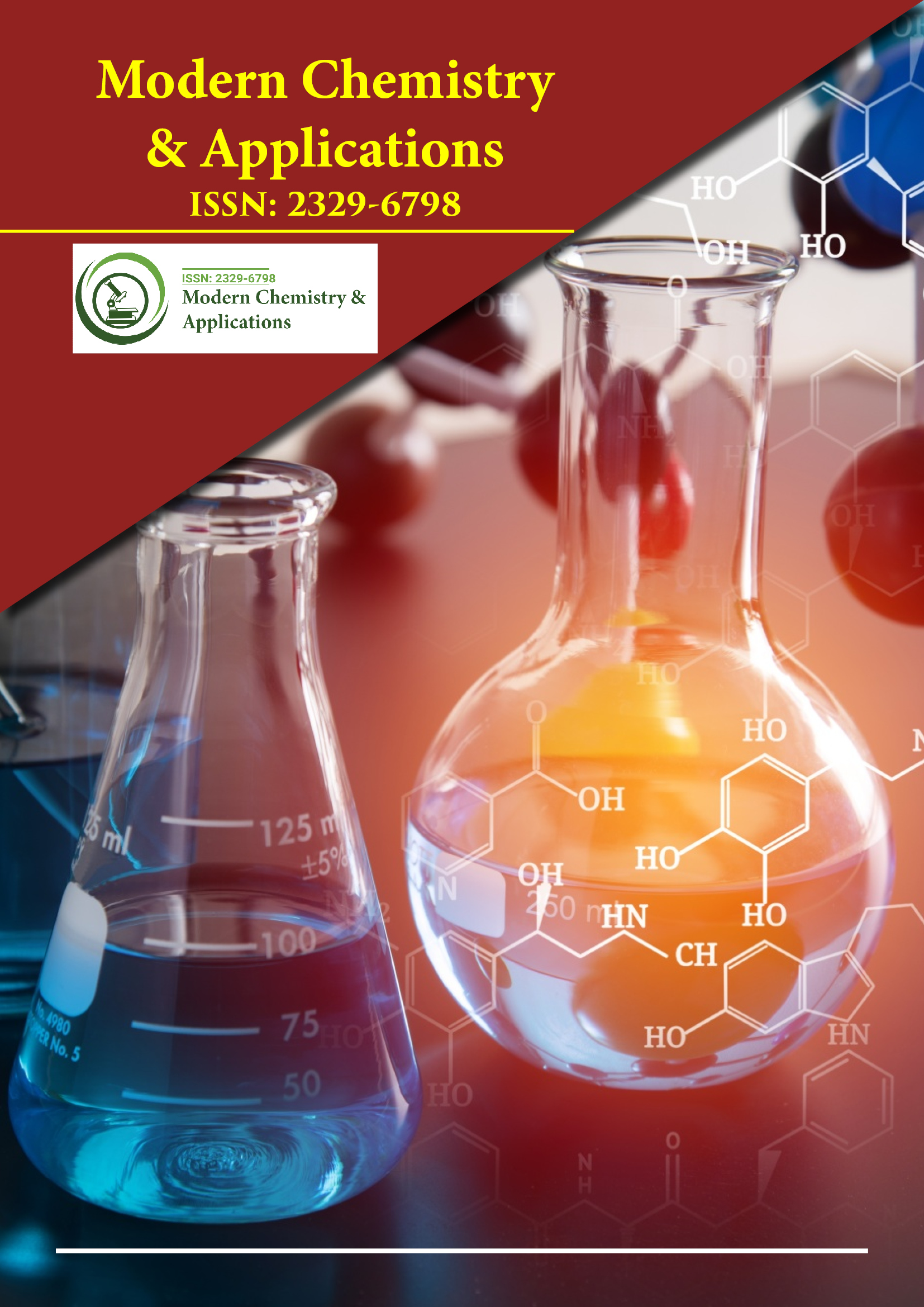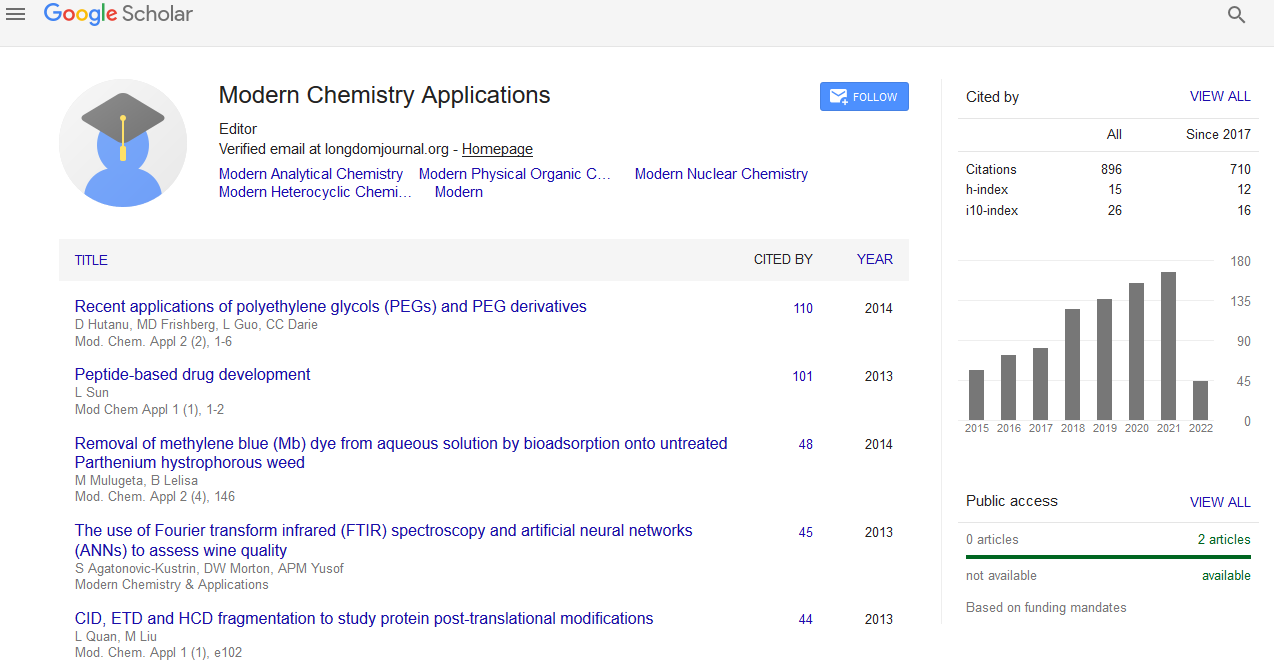Indexed In
- Open J Gate
- JournalTOCs
- RefSeek
- Hamdard University
- EBSCO A-Z
- OCLC- WorldCat
- Scholarsteer
- Publons
- Geneva Foundation for Medical Education and Research
- Google Scholar
Useful Links
Share This Page
Journal Flyer

Open Access Journals
- Agri and Aquaculture
- Biochemistry
- Bioinformatics & Systems Biology
- Business & Management
- Chemistry
- Clinical Sciences
- Engineering
- Food & Nutrition
- General Science
- Genetics & Molecular Biology
- Immunology & Microbiology
- Medical Sciences
- Neuroscience & Psychology
- Nursing & Health Care
- Pharmaceutical Sciences
Selective hydroformylation of alkyl acrylates using [2,2�-bis(dipyrrolylphosphinooxy)-1,1�-(ñ)- binaphthyl]/Rh catalyst: reversal of regioselectivity
5th Global Chemistry Congress
September 04-06, 2017 | London, UK
Hua Chen, Xueli Zheng and Xiao Shu
Sichuan University, China
Posters & Accepted Abstracts: Mod Chem Appl
Abstract:
Hydroformylation of alkyl acrylate could provide 1,3- and 1,4-bifunctional carbonyl compounds, which could transform to malonic acids, 1,4-dicarboxylic acid, lactones, 2-methyl-1,3-propanediol and 1,4-butanediol. Nevertheless, acrylate was regarded as a kind of less reactive substrate compared with general olefins, and the problem might lies in the formation of thermodynamically stable five- or six-membered rings through the coordination of carbonyl group to the Rh center [1], hence high temperature or high pressure was required. And the hydroformylation generally gave the branched aldehyde as the major product [2]. Hence, it is highly desirable to seek an accessible ligand/Rh system that affords linear aldehyde as the major product with high efficiency due to the wide application of 1,4-bifunctional compounds. Herein, a series of P-N ligands (Fig. 1) were synthesized and applied to Rh-catalyzed hydroformylation of alkyl acrylate. Intriguingly, highly selective hydroformylation of alkyl acrylate could be realized by an accessible ligand 2,2�??-bis(dipyrrolylphosphinooxy)-1,1�??-(±)-binaphthyl (ligand L1) with the presence of Rh(acac)(CO)2, that is, elevating the temperature to 90 oC, this Rh system could preferentially afford the linear aldehyde with 96.1% regioselectivity, and the TOF could reach up to 9000 h-1. More importantly, the regioselectivity could be readily controlled just through altering the temperature or the pressure, for instance, a high selectivity (> 99%) to branched aldehyde was obtained under 20oC and 2 MPa. In addition, L1/Rh system had benign substrate compatibility. These results enable the L1/Rh system to be a potential candidate for selective hydroformylation of functionalized olefin. Deuterioformylation was conducted to explore the mechanism of regioselectivity reversal, and the results established that the reversible rhodium hydride addition to form the Rh-alkyl species might play a vital role on this reversal. The β-hydride elimination of branched Rh-alkyl species was comparatively stronger than that of linear one under increased temperature, probably because that L1 could cause comparatively larger steric repulsion in branched Rh-alkyl species under high temperature, due to its bulky and rigid binaphthyl backbone characteristics. In turn, the linear Rh-alkyl species progress to linear aldehyde was facilitated.


